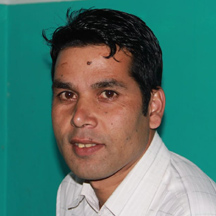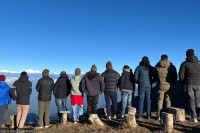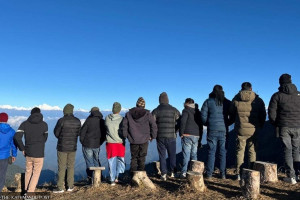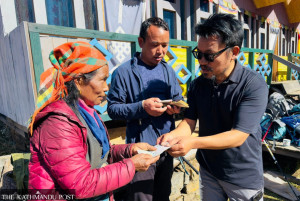Koshi Province
Snakebite victims are dying in Taplejung as they do not get immediate medical attention
For eastern hill and mountain districts, the only snakebite treatment centre is in Charali, Jhapa, which could take days to reach for those living in remote regions.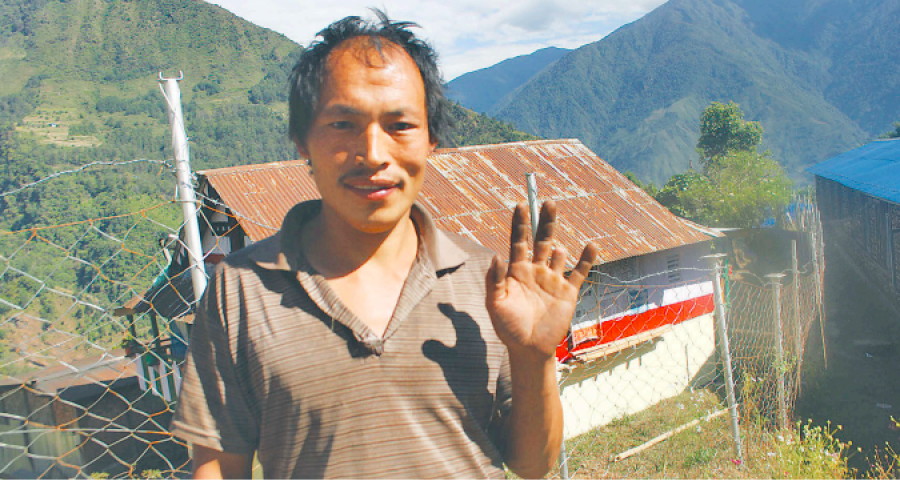
Ananda Gautam
Dhanmaya Mabo was bitten by a green pit viper, a venomous snake locally known as Hareu, when she was weeding the grass around her house in Tapethok Samling village in Phaktalung Rural Municipality, Taplejung, on July 12. The 52-year-old died 14 hours later.
Ram Limbu, Dhanmaya’s neighbour, said she lost her life because she could not get immediate medical attention.
“The incident happened at around 2pm. The nearest health post is four hours walk away in Lelep. We could not take Dhanmaya to the health post because there were no youths in the village to carry her to Lelep. She died the next morning,” Limbu said
Dhanmaya’s husband, Buddapal, had called a Fedangwa, a faith healer, to treat his wife, but the faith healer couldn’t save her.
“Hareu (green pit viper) and Gurbe (mountain pit viper) are common snakes found in Taplejung,” said Dhan Bahadur Mabohang of Ikhabu village in Phaktalung Rural Municipality.
Mabohang, who lost his three-year-old son to snakebite eight years ago, said there are many snakebite fatalities in Taplejung, most of the victims die due to the lack of timely medical intervention.
On June 2, Pannalal Bamjan, 68, of Deblinge village in Phungling Municipality-1 died after he was bitten by a venomous snakebite while he was out to use the outhouse at night.
Deblinge is not far from Fungling Bazaar, the district headquarters, where the district hospital is located. However, Bamjan’s family could not take him to the hospital because vehicles were not available due to the coronavirus lockdown.
Although locals say that snakebite-related deaths are common in Taplejung, the authorities have not kept any record.
Deputy Superintendent of Police Mahendra Shrestha said the district police does not keep data of snakebite fatalities because most deaths go unreported.
“Since the people do not report snakebite-related deaths, it is difficult to maintain a database,” he said.
Durga Prasad Bhattarai, of snakebite treatment centre in Charali, Jhapa, said snakebite deaths in mountain districts like Taplejung may be high mainly because health facilities are far away and people’s preference for alternative medicines and faith healing over medical science.
“There is a tendency of people seeking treatment with faith healers instead of going to health facilities for snakebite or any other medical emergencies,” said Bhattarai.
Even if people visited the health facilities, treatment for snakebites is far from guaranteed since the whole of Taplejung does not have a dedicated snakebite treatment centre.
The nearest snakebite treatment centre is in Charali, Jhapa, run by the Nepal Army. For people living in remote areas of Taplejung, it could take up to five days to reach Charali.
Dhan Bahadur, who had lost his son eight years ago, himself was bitten by a snake in 2015. He had gone to the district hospital in Fungling the next day, only to be referred to the snakebite treatment centre in Charali.
He took a public bus to Charali from Fungling Bazaar and reached the snakebite treatment centre only on the third day of the incident. By that time, his condition had become serious and he was sent to BP Koirala Institute of Health Sciences in Dharan, Sunsari. Doctors managed to save his life by amputating the finger where he was bit by the snake.
Snakebite victims of Panchthar, Tehrathum and Ilam also go to Charali for treatment for a lack of snakebite centres in their respective districts.
According to Bhattarai, there has been nearly a 50 percent increase in the number of patients visiting the centre from hill and mountain districts in recent years.
“Around 1,500 people visit the treatment centre for treatment annually,” he said.
The treatment centre charges Rs 500 from a patient if s/he is to be admitted at the centre for a few days. The anti-snake venom is provided free of cost but the patient has to buy other medicines.




 13.12°C Kathmandu
13.12°C Kathmandu